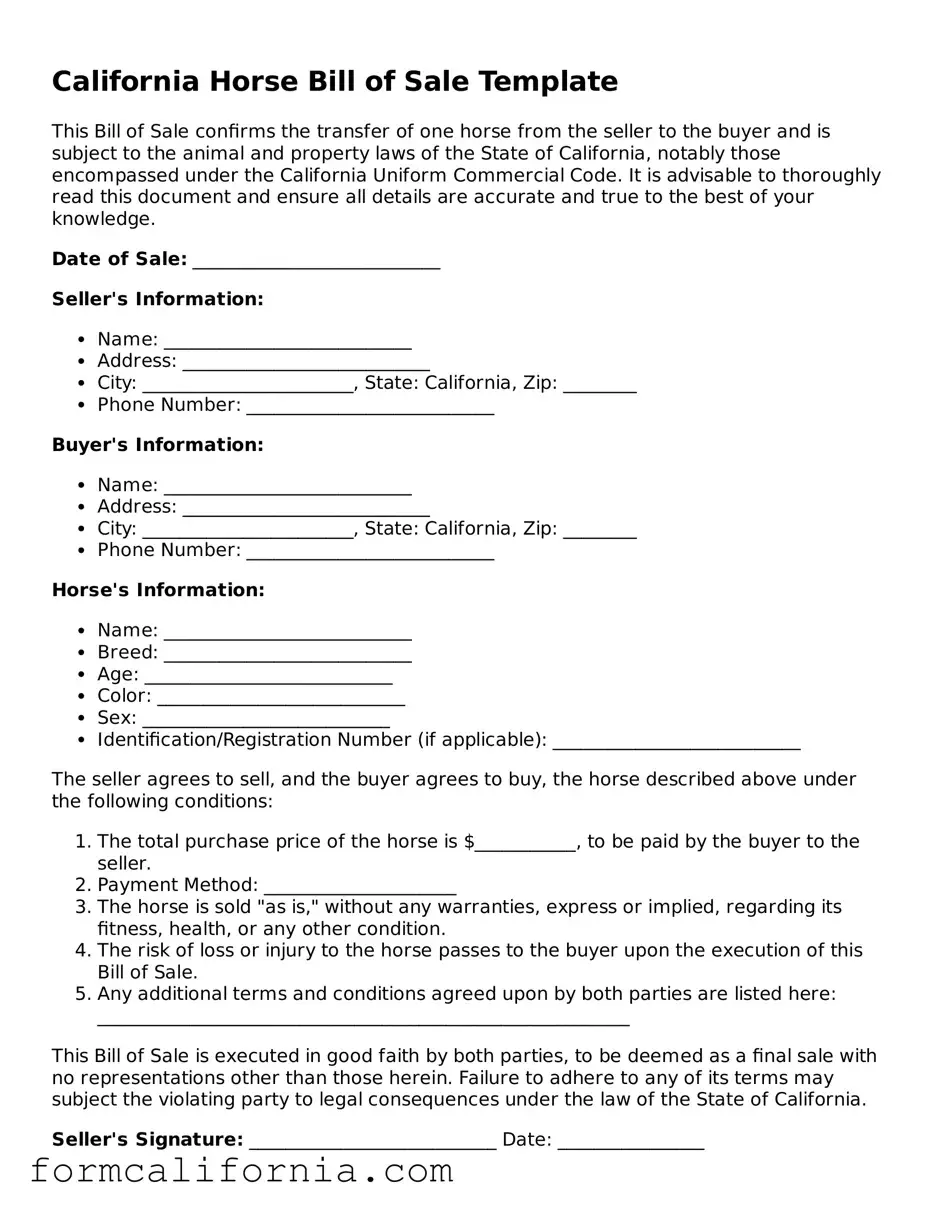The Vehicle Bill of Sale form shares similarities with the California Horse Bill of Sale in that both serve as legal evidence of a transaction. Specifically, these documents record the transfer of ownership from seller to buyer, detailing the terms of sale, description of the item (be it horse or vehicle), and agreed-upon price. Moreover, both documents typically require notarization to enhance their legality, ensuring that the signatures of the involved parties are verifiable, thus offering protection against future disputes.
Equally, the Equipment Bill of Sale form mirrors the California Horse Bill of Sale in providing a documented record of the sale and transfer of ownership of equipment. Like the horse bill, it outlines specific details of the sold item, including make, model, and condition, alongside the sale price and date of transaction. It's crucial for both documents to accurately capture these details to protect all parties involved, particularly in legal contexts where proof of ownership or the terms of sale may be contested.
A General Bill of Sale form is another document bearing resemblance to the California Horse Bill of Sale, albeit with a broader application. It facilitates the sale of various types of personal property — from jewelry to electronics — much like the specific focus on horses in the horse bill. What links these documents is their function to document a transaction, providing a legal record of the transfer of ownership, terms of sale, and agreement between buyer and seller, which is essential for legal clarity and the resolution of potential disputes.
Similarly, the Boat Bill of Sale form is akin to the California Horse Bill of Sale, in that it records the transaction details for a boat rather than a horse. These details include the boat’s identification, the sale price, and the particulars of the seller and buyer. Both forms also act as proof of ownership change and may be required for registration purposes, reflecting the necessity of having a formal agreement in place, documented through a bill of sale, to ensure the transfer is recognized legally.
The Firearm Bill of Sale form also shares parallels with the California Horse Bill of Sale. While it specifically relates to the transfer of firearms, it functions under the same premise of documenting ownership transfer, including specifics about the item sold, terms of the sale, and parties involved. Importantly, both documents underscore the importance of legality and safety in the transfer process, often adhering to specific state requirements to ensure the sale is conducted lawfully.
Another document similar to the California Horse Bill of Sale is the Business Bill of Sale form. This document is used to transfer ownership of a business rather than an individual item. Despite this difference, both forms carry out the essential function of recording the details of the transaction, including the sale price and conditions of sale, which are crucial for legal and tax purposes. This ensures that both parties have a clear understanding and agreement on the transfer of assets, aiding in the smooth transition of ownership.
Last but not least, the Livestook Bill of Sale form parallels the California Horse Bill of Sale through its specialized focus on the sale of animals, though it encompasses a wider range of livestock beyond horses. Both forms are instrumental in detailing the transaction, specifying the identification of the animals, the sale price, and the terms agreed upon by the involved parties. The purpose of such documentation is to provide a formal record that outlines the rights and responsibilities of each party, thereby offering a level of security and dispute prevention in the transfer of livestock ownership.
